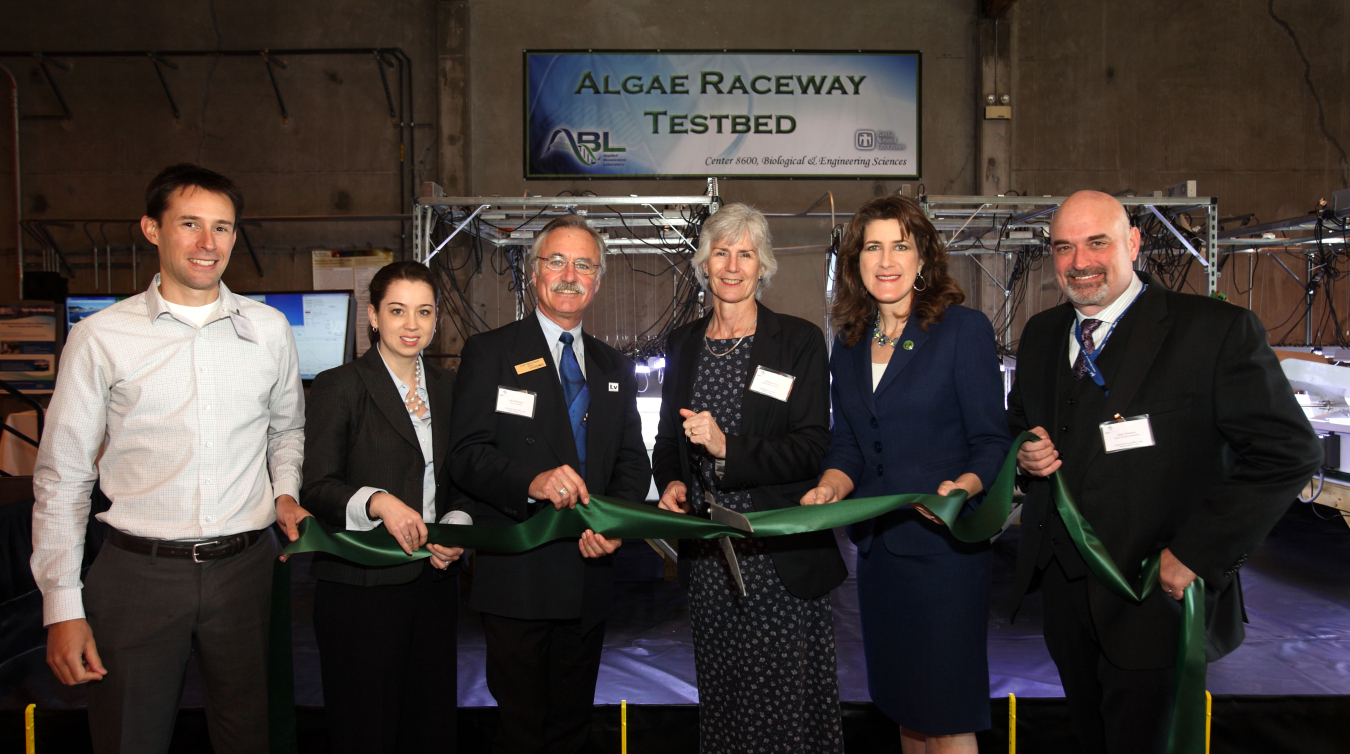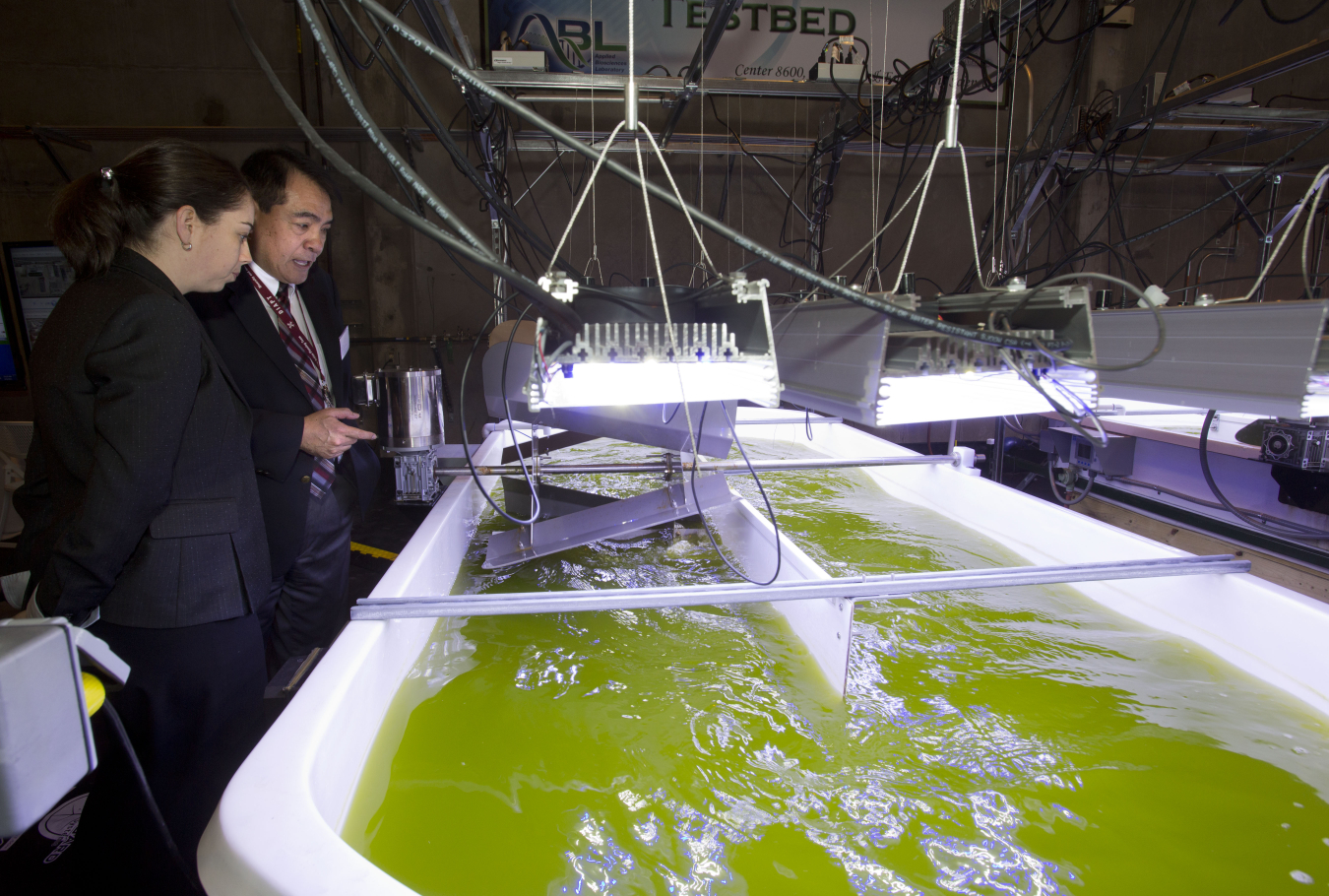A new algae raceway testing facility opened earlier this month at Sandia National Laboratories in Livermore, California, that could help bring algal biofuels one step closer to commercialization.
February 18, 2016
(From left to right) BETO Technology Manager Daniel Fishman and Program Manager Alison Goss Eng, Livermore Mayor John March, Sandia National Laboratories Vice President Marianne Walck, California State Assembly Catharine Baker, and Chief Scientific and Technology Officer and Vice President of the Deconstruction Division at the Joint BioEnergy Institute Blake Simmons cut the ribbon for the new Algae Raceway Testing Facility.

BETO Program Manager Alison Goss Eng and Ben Wu, manager of biomass science and conversion technology at Sandia National Laboratories.
A new algae raceway testing facility opened earlier this month at Sandia National Laboratories in Livermore, California, that could help bring algal biofuels one step closer to commercialization. Algae is an ideal source of biomass as it is one of the fastest growing microorganisms on the planet, but researchers have yet to use it to produce biofuel that is inexpensive enough to compete with petroleum fuel. This new testing facility will help researchers focus on improvements in pond cultivation necessary to achieve the goal of cost-competitive algal biofuel.
The raceway facility—named for its similarity in shape to an auto racetrack— consists of three 1,000-liter raceway ponds with advanced 24-hour real-time hyperspectral monitoring of algae culture growth and pond health diagnostics. It was upgraded with funding from the U.S. Department of Energy’s Bioenergy Technologies Office (BETO). The enclosed testing environment is ideal for experimenting with genetic strains and algae crop protection strategies. It offers customizable lighting and temperature controls that simulate multiple real-life algae ponds conditions across the United States, which allows the results to be easily scaled-up to larger, outdoor algae ponds.
BETO-funded projects will begin using the algae raceway immediately, including a project that seeks to convert algae proteins into useful chemical compounds such as butanol (an alcohol that can be used as a transportation fuel) and a project with Lawrence Livermore National Laboratory investigating a probiotic approach to algae crop protection. BETO has identified algae crop protection as a major R&D focus area to advance applied algal biofuels research and development.
Sandia hosted a ribbon-cutting event on February 4 to unveil the new facility at its Livermore Valley Open Campus. Advanced Algal Systems Program Manager Alison Goss Eng and Technology Manager Daniel Fishman helped cut the ribbon.
Supporting this raceway facility is one of the many ways BETO aims to achieve its goal of developing viable, cost-competitive biofuels from feedstocks, including algae, which can help to reduce U.S. dependence on foreign oil, reduce greenhouse gas emissions, and create economic opportunities. Sandia National Laboratories is one of 11 Energy Department national laboratories that receive funding from BETO.

